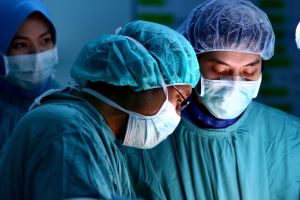Science Policy Around the Web – June 6, 2014
By: Kaitlyn Morabito
Our weekly linkpost, bringing you interesting and informative links on science policy issues buzzing about the internet.
Google Glass Enters the Operating Room – Doctors at hospitals around the country are embracing Google Glass as a means to enhance surgery and training. This technology allows doctors to project patient records and x-rays without having to look across the room. Additionally, Google Glass can be used to videocast live or record surgeries for consultations with other specialists or train doctors in foreign countries. It can also be used by emergency response crews to consult with doctors in the field. Since Google Glass is hands free, it doesn’t pose a contamination threat. Before Google Glass will be an operating room staples many concerns will need to be address. This includes protecting patient privacy and preventing the dangers of multitasking and “tunnel vision” by operating doctors. (Anahad O’Connor)
Unusual Microbe Engineered to Convert Grass to Gas – U.S. researchers have genetically modified bacteria, Caldicellulosiruptor bescii, originally found in the hot springs of Yellowstone National Park, to break down simple sugars into ethanol. The goal of this research is to decrease the production and environmental cost of ethanol, which is currently manufactured from corn requiring a lot of energy and money. Using Caldi, ethanol can be derived from cellulosic biomass such as plant leaves and stems including switch grass which can be grown anywhere. The researcher seek to increase efficiency by 20% to make it viable and cheaper alternative. (Robert F. Service)
Children with Autism have Elevated Levels of Steroid Hormones in the Womb – In a retrospective study, scientists in Cambridge and Denmark measured hormone levels in amniotic fluid samples from 128 males known to have autism. These samples were from around 15-16 weeks of pregnancy, a known critical time period for early brain development. Scientist found higher levels of all steroid hormones compared to normal controls. This builds on previous knowledge that autistic traits are associated with higher levels of prenatal testosterone. These finding may begin to explain why the autism rate is higher in males than in females. Although an important step in finding in understanding autism, these findings cannot function as a prenatal screening test since there was overlap between the groups. (Science Daily)
Have an interesting science policy link? Share it in the comments!

I love you for doing this! I am so grateful that you love these kids as much as I do. It is time we give them a voice! You are my forever team mate, cohort, and friend. I love you!
megsolomon83
June 6, 2014 at 1:06 pm